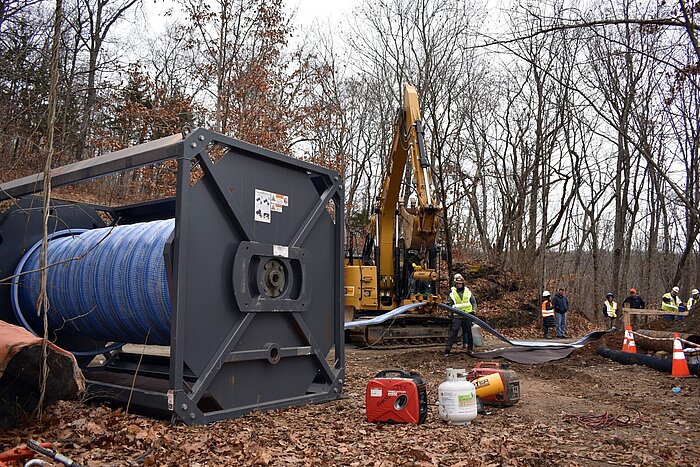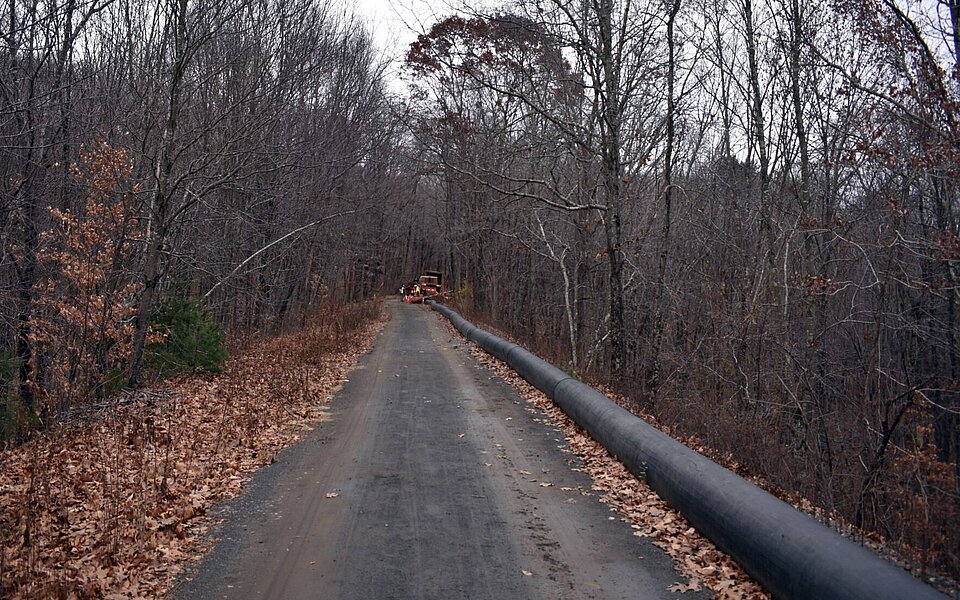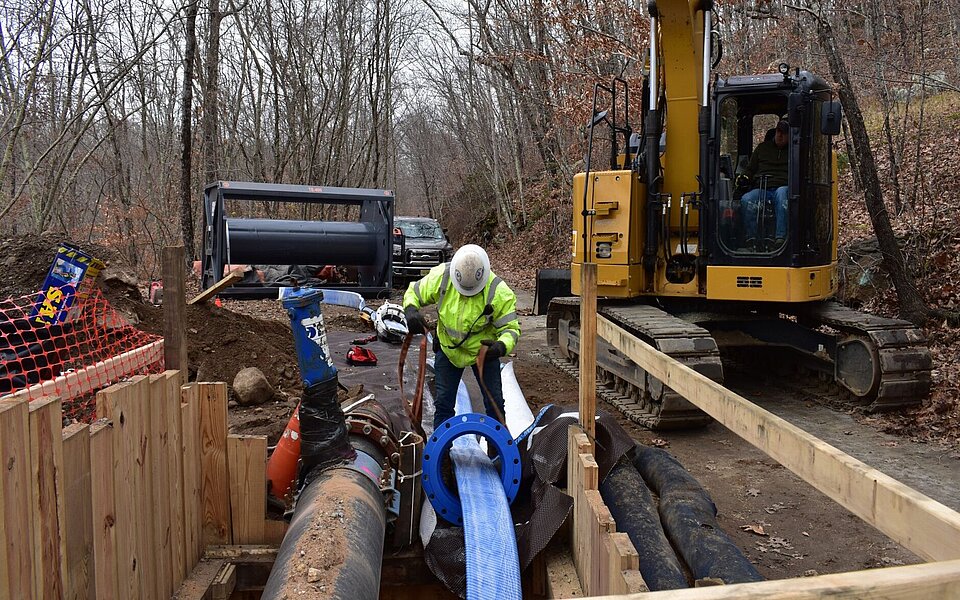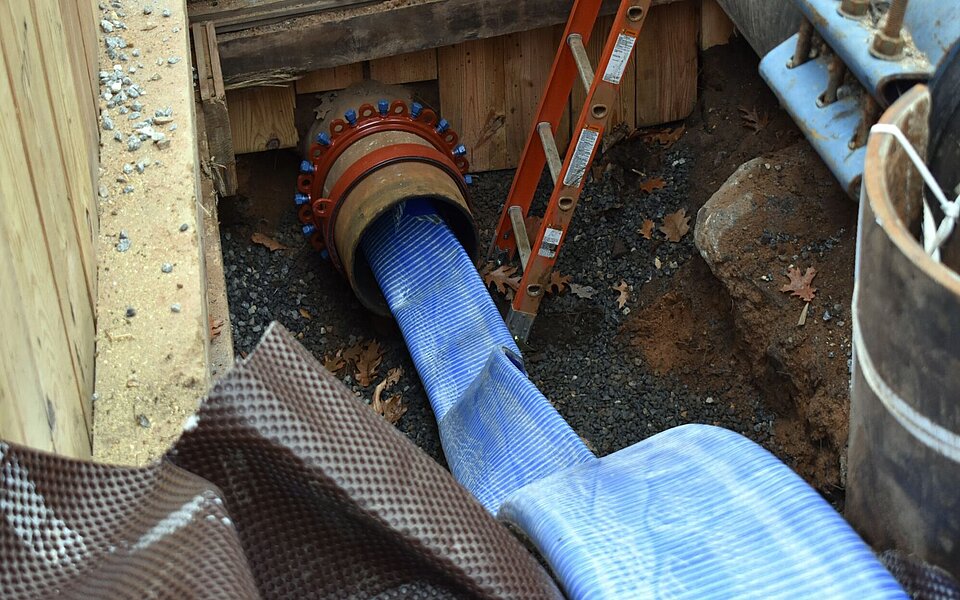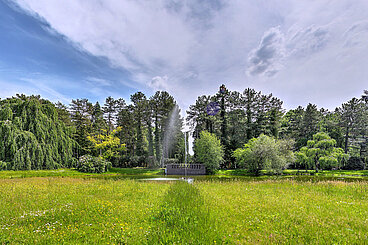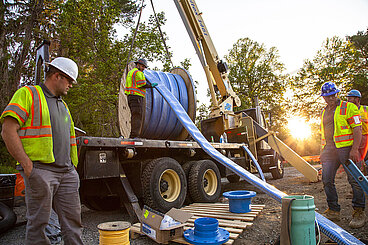The 16-inch sewer force main runs through an underground viaduct and also passes under old railroad ties. So the pipe ruled out a dig-and-replace solution as too difficult and expensive. In addition, the pipeline is located underneath an active bike path. Closing it down for a longer period in case of an open-trench rehabilitation was also not an option.
Already at an early stage of the project, the operator had considered alternative trenchless rehabilitation methods. The final decision for Primus Line® was mainly due to the fact that the 1600 feet could be installed in one single section with only one pit at each end – which would result in very little impact on the environment and reduce installation time. Another asset in favor of Primus Line® is its ability to elongate considering the extreme temperature swings of New England. In combination with the fact that it can be inserted in long lengths make it a perfect system for use in these types of applications with difficult infrastructural conditions.
The Primus Line® technology consists of a three-layer aramid-reinforced liner and specially developed connectors. The liner itself is self-supporting and thus leaves a slight annular space in the host pipe. There is neither need for curing nor does it adhere to the walls of the host pipe. For the project in Colchester, the 16-inch cement-lined ductile iron host pipe with an operating pressure of 40 psi was suitable for use of the 18-inch Primus Liner with an inner diameter of 16.66 inches.
Prior to the installation of the Primus Line® system, certified installation partner J. Fletcher Creamer & Son conducted CCTV inspection and pipe cleaning in order to create a free inner diameter of the pipe to be rehabilitated – a prerequisite for the installation of the Primus Line® system to ensure that no damage occurs during the actual installation process. Moreover, it was verified that the liner would be permanently filled by the means of a non-return valve at the pump. A second CCTV inspection confirmed the successful cleaning process.
With a speed of approximately 20 feet per minute, the liner was pulled into the host pipe with a winch at the destination pit. Subsequently, the two medium-pressure connectors were assembled. The installation process itself was completed within one working day followed by a hydrostatic pressure test. The rehabilitated sewer force main could be brought back into operation by connecting it to the network with a spool piece. As a result of this rehabilitation method, a useful life span of at least 50 years has been achieved.
Stay up to date with Primus Line: Subscribe to our newsletter now!
Information about sending newsletters with the provider CleverReach, evaluation, and your unsubscribe options can be found in our privacy policy.
